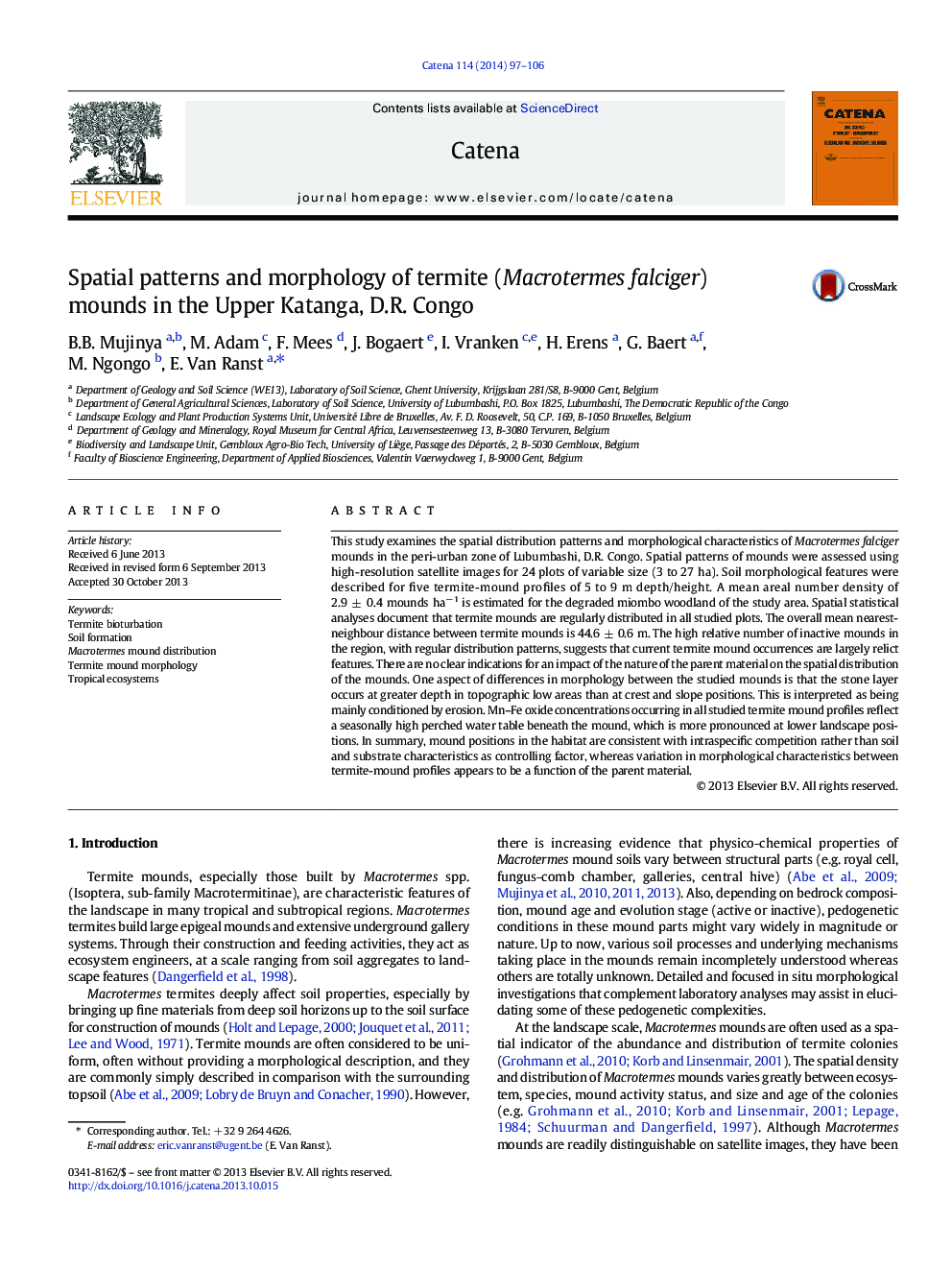| کد مقاله | کد نشریه | سال انتشار | مقاله انگلیسی | نسخه تمام متن |
|---|---|---|---|---|
| 4571495 | 1629238 | 2014 | 10 صفحه PDF | دانلود رایگان |

• Distribution patterns of Macrotermes falciger termite mounds are regular.
• Current distribution patterns appear to be relict features.
• Mounds have associated stone layer depressions and water-saturation features.
This study examines the spatial distribution patterns and morphological characteristics of Macrotermes falciger mounds in the peri-urban zone of Lubumbashi, D.R. Congo. Spatial patterns of mounds were assessed using high-resolution satellite images for 24 plots of variable size (3 to 27 ha). Soil morphological features were described for five termite-mound profiles of 5 to 9 m depth/height. A mean areal number density of 2.9 ± 0.4 mounds ha− 1 is estimated for the degraded miombo woodland of the study area. Spatial statistical analyses document that termite mounds are regularly distributed in all studied plots. The overall mean nearest-neighbour distance between termite mounds is 44.6 ± 0.6 m. The high relative number of inactive mounds in the region, with regular distribution patterns, suggests that current termite mound occurrences are largely relict features. There are no clear indications for an impact of the nature of the parent material on the spatial distribution of the mounds. One aspect of differences in morphology between the studied mounds is that the stone layer occurs at greater depth in topographic low areas than at crest and slope positions. This is interpreted as being mainly conditioned by erosion. Mn–Fe oxide concentrations occurring in all studied termite mound profiles reflect a seasonally high perched water table beneath the mound, which is more pronounced at lower landscape positions. In summary, mound positions in the habitat are consistent with intraspecific competition rather than soil and substrate characteristics as controlling factor, whereas variation in morphological characteristics between termite-mound profiles appears to be a function of the parent material.
Journal: CATENA - Volume 114, March 2014, Pages 97–106